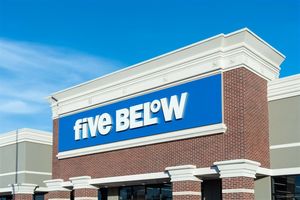Financial News
Navigating the New Normal: An Investor's Guide to Market Volatility, Inflation, and Policy Shifts

The U.S. financial landscape in 2025 is a complex tapestry woven with threads of economic shifts, political uncertainties, and evolving monetary policy. Investors are confronted with a "new normal" characterized by slowing job growth, stubbornly persistent inflation, and the Federal Reserve's delicate dance with interest rate adjustments, all set against a backdrop of potential policy upheavals under a new administration. This guide aims to synthesize these diverse forces, offering strategic insights and actionable advice for navigating the choppy waters ahead.
The Economic Currents: Slowing Growth Meets Sticky Inflation
Recent economic data reveals a labor market showing clear signs of deceleration. The August 2025 nonfarm payroll report indicated a meager 22,000 jobs added, significantly below expectations, and a staggering 911,000 fewer jobs created between April 2024 and March 2025 than initially reported. The unemployment rate has edged up to 4.3%, its highest since late 2021, and wage growth has moderated. This cooling labor market suggests that the economy is "bending, but not breaking," potentially heading towards a "stall speed" that could precede a broader slowdown.
Despite this weakening employment picture, inflation remains a persistent and "sticky" concern. As of July 2025, annual CPI hovered at 2.7%, with core CPI (excluding volatile food and energy) at 3.1%, both still above the Federal Reserve's 2% target. Services inflation, along with the impact of escalating trade tariffs, continues to embed higher costs into the economic system. This can make services inflation particularly "stickier" than goods inflation due to its direct ties to wages and lesser exposure to global supply chain fluctuations. Consumer sentiment reflects these anxieties, with inflation expectations on the rise and a discernible shift towards prioritizing essential goods over discretionary purchases. This combination of slowing growth and sticky inflation raises the specter of "stagflation-lite," a challenging environment for both consumers and businesses, where economic growth is noticeably slower while inflation remains elevated.
The Federal Reserve's Tightrope Walk: Rate Cuts on the Horizon?
The Federal Reserve is caught in a dilemma, balancing its dual mandate of maximizing employment and maintaining price stability. The weakening labor market strongly advocates for interest rate cuts to stimulate economic activity. Indeed, market participants are largely pricing in a 25-basis-point rate cut in September 2025, with some even anticipating a more aggressive 50-basis-point reduction. Further cuts, potentially totaling two percentage points, are projected through the end of 2027, bringing the federal funds rate to a target range of 2.25%-3.50%. The current federal funds rate stands at 4.25%-4.50% in mid-2025.
However, the persistent inflation, exacerbated by potential new tariffs, complicates this easing trajectory. Premature or overly aggressive cuts risk reigniting price pressures, pushing the Fed onto a precarious tightrope. Fed Chair Jerome Powell has acknowledged the "shifting balance of risks," signaling a dovish pivot, yet some officials remain cautious, emphasizing data-dependency. In his August 22, 2025, Jackson Hole speech, Powell stated that "risks to inflation are tilted to the upside, and risks to employment to the downside—a challenging situation." He underscored that future decisions are "based solely on [officials'] assessment of the data and its implications for the economic outlook and the balance of risks," a testament to the Fed's flexible yet cautious approach.
Political Dynamics: A New Era of Policy Uncertainty
The recent political transition, with Donald Trump's return to the presidency, introduces a significant layer of policy uncertainty. The new administration has moved swiftly to alter or dismantle key aspects of the previous administration's industrial policies.
The outgoing administration prioritized an industrial policy focused on revitalizing domestic manufacturing through investments in clean energy (Inflation Reduction Act) and semiconductors (CHIPS and Science Act). For instance, the Inflation Reduction Act (IRA) aimed to boost green energy investment. However, the new administration's "One Big Beautiful Bill Act," signed in July 2025, includes provisions that reduce energy credits previously established under the IRA, indicating a direct effort to curtail its impact.
The new administration is expected to champion "America First" policies. These include sweeping universal tariffs, such as a 10% "reciprocal tariff" on nearly all imports effective April 5, 2025, with country-specific tariffs potentially reaching 50-60% on goods like steel, aluminum, copper, and Chinese imports. An extension of the 2017 tax cuts is another cornerstone, formalized by the "One Big Beautiful Bill Act," projected to reduce federal tax revenue by $4.5 trillion between 2025 and 2034. Deregulation across sectors, particularly in energy and finance, is also a key proposal, exemplified by an executive order mandating federal agencies to identify ten existing regulations for rescission for every new one issued. Lastly, an expansion of domestic fossil fuel production is a central tenet, aiming for energy independence by opening federal lands for drilling and encouraging fracking.
These policies, while aiming to boost domestic industry, carry significant risks of increased consumer costs (up to $300 billion annually, with some analyses suggesting a reduction in household purchasing power by $1,200 to $5,000 per year), retaliatory trade wars (already seen with Canada, Mexico, and intensified with China), and further inflationary pressures, potentially expanding the national debt. The OECD warns that increased trade barriers will suppress growth and fuel inflation worldwide. This clash of economic philosophies creates both opportunities and risks. Industries aligned with Trump's agenda, such as traditional energy and some domestic manufacturing sectors, might see immediate tailwinds from deregulation and protectionist measures. Conversely, sectors reliant on global supply chains or those benefiting from clean energy subsidies could face headwinds.
Investor's Playbook: Strategic Adaptations for the Evolving Market
In this environment of elevated market volatility, proactive and diversified investment strategies are crucial. The VIX index remains elevated, reflecting ongoing investor uncertainty, and sectoral divergence is evident, with some sectors struggling while others show resilience.
Strategic Adjustments for Portfolios:
- Diversification is Key: Maintain a well-diversified portfolio across uncorrelated asset classes (equities, fixed income, real assets like commodities or gold). This hedges against unpredictable market swings and policy reversals.
- Inflation Hedging: Given persistent inflation and the potential for tariffs to exacerbate it, consider allocations to inflation-sensitive assets. Gold (XAU) has already surged to record highs as a safe-haven asset, driven by inflation concerns and geopolitical tensions. Treasury Inflation-Protected Securities (TIPS) and certain real estate investments (REITs) can also offer protection, with REITs showing promise in certain niche sectors like data centers despite broader real estate headwinds.
- Debt Management: For businesses, prudent debt management is paramount. Refinancing variable-rate loans into fixed-rate alternatives, optimizing cash flow, and exploring alternative financing options are essential. Investors should assess the debt levels of companies in their portfolios.
- Cash Flow and Efficiency: Businesses must prioritize operational efficiency, cost management, and robust cash flow generation. This includes streamlining processes, leveraging technology, and negotiating favorable supplier contracts. Cash flow forecasting is a critical tool for mitigating risks.
- Sectoral Selectivity: The market will likely exhibit continued sectoral divergence.
- Potential Beneficiaries of Rate Cuts: The technology sector, especially growth stocks like NVIDIA (NASDAQ: NVDA) and Alphabet (NASDAQ: GOOGL), is entering 2025 with renewed momentum driven by AI investments and anticipated lower interest rates. The real estate sector, including homebuilders like D.R. Horton (NYSE: DHI), Lennar (NYSE: LEN), and construction suppliers like Builders FirstSource (NYSE: BLDR), could see a boost from easing mortgage rates. Consumer discretionary companies like Ralph Lauren (NYSE: RL) and Prada (HKG: 1913) could also benefit from increased consumer spending. Highly leveraged companies, particularly small-caps, would also benefit from reduced interest expenses.
- Resilient in Higher-Rate/Inflationary Environments: Consumer staples companies such as Walmart (NYSE: WMT) and Procter & Gamble (NYSE: PG), along with healthcare and some segments of the energy sector like ExxonMobil (NYSE: XOM) and Chevron (NYSE: CVX), tend to perform well due to the essential nature of their products or services, allowing them to pass on higher costs.
- Vulnerable to Tariffs/Economic Slowdown: Industries heavily reliant on global supply chains (e.g., many electronics manufacturers) and automotive companies with international sourcing like Ford (NYSE: F) and General Motors (NYSE: GM) are highly susceptible to tariffs and trade disruptions. Certain retail segments focused on non-essential goods could also face headwinds if consumer spending contracts broadly due to tariffs and economic slowdown.
Key Indicators to Monitor:
- Inflation Reports (CPI, PCE, PPI): Closely watch these monthly releases for signs of a sustained slowdown or re-acceleration, which will dictate the Fed's policy path. Pay particular attention to core inflation (CPI and PCE) and the impact of tariffs on goods prices. The PCE is the Federal Reserve's preferred measure.
- Federal Reserve Communications: Scrutinize speeches from Fed Chair Jerome Powell, FOMC minutes, and other statements for shifts in monetary policy outlook and intentions. These communications often signal the Fed's view on the economy's health and future inflation expectations.
- Labor Market Data: Monitor unemployment rates, nonfarm payroll reports, and wage growth to gauge the health of the job market and its influence on Fed decisions. Strong wage growth, if it outpaces productivity, can contribute to inflationary pressures.
- Corporate Earnings Guidance: Upcoming earnings reports and company guidance will provide crucial insights into business health, profit margins, and forward-looking sentiment, especially concerning the impact of tariffs and interest rates. Positive guidance can attract investors, while negative guidance may lead to sell-offs.
- Trade Policy Developments: Keep a close eye on announcements regarding tariffs, trade negotiations, and international trade relations, as these will directly affect global supply chains, corporate profitability, and potentially trigger retaliatory actions from other countries.
- Consumer Sentiment and Spending: Track consumer confidence indices (e.g., University of Michigan, Conference Board) and retail sales reports for signs of sustained resilience or a deeper pullback in spending. Consumer activity constitutes a significant portion of economic output, making consumer behavior a primary driver of economic growth and market performance.
Conclusion: Navigating Uncharted Waters
The current economic landscape is defined by a delicate and often contradictory interplay of forces. The Federal Reserve's imperative to stimulate a weakening labor market while battling persistent inflation, coupled with the profound policy shifts under a new presidential administration, creates a highly uncertain environment. For investors, this means preparing for continued volatility and the need for agile, informed decision-making. By embracing diversification, hedging against inflation, strategically adjusting portfolios to capitalize on emerging opportunities, and diligently monitoring key economic indicators, investors can position themselves to navigate these uncharted waters and potentially emerge stronger in the new normal. The emphasis will be on resilience, adaptability, and a deep understanding of how macroeconomic shifts translate into specific market performance.
More News
View More



Recent Quotes
View More
Quotes delayed at least 20 minutes.
By accessing this page, you agree to the Privacy Policy and Terms Of Service.



